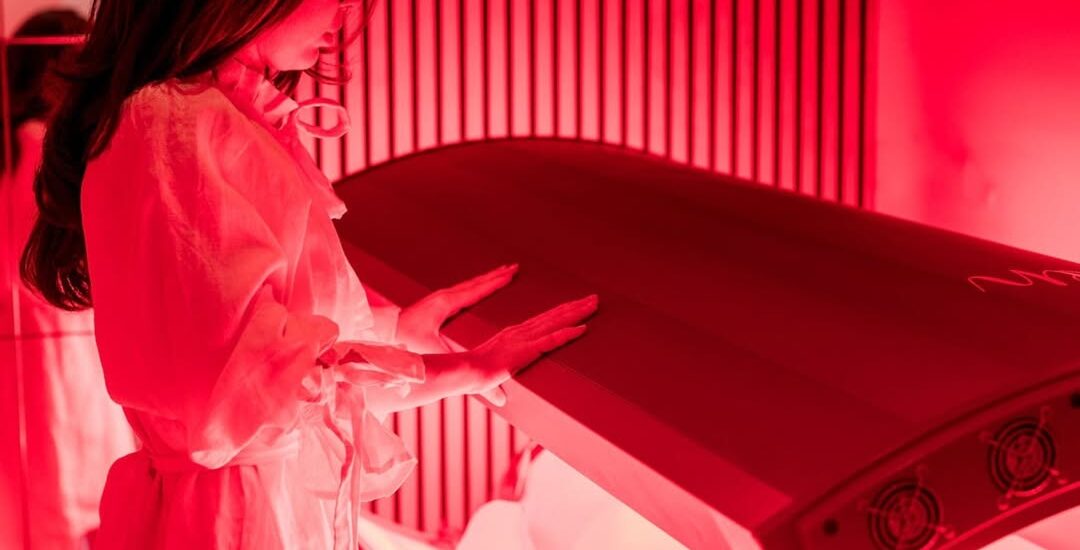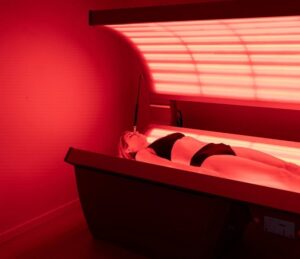



In the world of modern health and wellness, innovative therapies are constantly emerging to enhance physical and mental well-being. Among these, red light therapy (RLT) has gained tremendous attention for its wide range of benefits—from improving skin health to reducing muscle pain and promoting faster recovery. What once was a treatment reserved for medical clinics and luxury spas is now becoming a mainstream part of personal wellness routines worldwide. Experience the power of red light therapy for wellness at Total Xen, where advanced light technology supports relaxation, recovery, and overall vitality. Below, we explore the science, benefits, and growing role of red light therapy in modern self-care and holistic health practices.
Red light therapy, also known as low-level laser therapy (LLLT) or photobiomodulation, is a non-invasive treatment that uses specific wavelengths of red and near-infrared light to stimulate cellular function. When the light penetrates the skin, it is absorbed by the mitochondria—the “powerhouse” of the cell—boosting the production of adenosine triphosphate (ATP).
This increase in cellular energy leads to a range of positive biological effects, such as faster tissue repair, reduced inflammation, and improved blood circulation. Unlike ultraviolet (UV) light, red light is safe and does not damage the skin or cause burns. Instead, it helps cells function more efficiently, promoting overall health from the inside out.
The science of red light therapy lies in photobiomodulation, a process where light interacts with the body at the cellular level. The red and near-infrared wavelengths—typically between 630 nm and 850 nm—penetrate deep into the skin, reaching muscles, joints, and even bones.
When these wavelengths interact with cytochrome c oxidase, an enzyme in the mitochondria, they help increase oxygen utilization and energy production. This reaction improves the body’s ability to repair itself and maintain optimal cellular function.
Scientific studies have shown that consistent use of red light therapy can:
Reduce oxidative stress in cells
Promote collagen production
Stimulate hair growth
Accelerate wound healing
Reduce inflammation and pain
The growing body of clinical research makes it clear that red light therapy isn’t just a passing trend—it’s a science-backed wellness innovation.

One of the most popular applications of red light therapy is in skincare. It’s widely used for improving complexion, reducing wrinkles, and promoting youthful, glowing skin.
When red light penetrates the dermal layers, it stimulates fibroblast cells to produce more collagen and elastin—two vital proteins that keep the skin firm and elastic. Over time, this can significantly reduce the appearance of fine lines, age spots, and scarring.
Many dermatologists and aestheticians recommend red light therapy for:
Anti-aging and wrinkle reduction
Acne treatment (by reducing inflammation)
Healing post-surgery or post-laser treatment skin
Enhancing skin tone and texture
Unlike chemical peels or invasive cosmetic treatments, red light therapy offers natural rejuvenation without pain or downtime.
Another significant role of red light therapy in modern wellness is pain management and muscle recovery. Athletes, physical therapists, and fitness enthusiasts are turning to RLT for its proven ability to reduce inflammation and speed up muscle repair.
By improving blood flow and reducing oxidative stress, red light therapy helps tissues recover faster after intense workouts or injuries. It can also be used for chronic conditions such as:
Arthritis and joint pain
Tendonitis and muscle strains
Back and neck pain
Post-surgery inflammation
For those with active lifestyles, using a red light therapy device regularly can help maintain performance, reduce downtime, and support long-term joint health.
Modern wellness routines are incomplete without addressing mental well-being, and red light therapy contributes significantly here too. Research has shown that exposure to red and near-infrared light can help regulate the body’s circadian rhythm, leading to better sleep patterns and improved mood.
When used in the evening, red light therapy helps signal to the brain that it’s time to wind down, enhancing melatonin production—the hormone responsible for sleep. Moreover, it can help reduce symptoms of Seasonal Affective Disorder (SAD) and depression by influencing serotonin and dopamine levels in the brain.
For people spending long hours in front of screens or under artificial lighting, incorporating red light sessions into daily routines can help restore balance and promote relaxation.
Incorporating red light therapy into fitness and recovery routines has become increasingly popular among professional athletes and wellness enthusiasts. Many gyms, recovery centers, and even home setups now include LED light panels or handheld RLT devices.
Using red light before a workout can help activate muscles, improve blood flow, and prepare the body for physical activity. Post-workout sessions, on the other hand, can reduce soreness and enhance muscle regeneration by increasing oxygen delivery and reducing lactic acid buildup.
Studies have shown that athletes who consistently use red light therapy experience:
Less fatigue after workouts
Shorter recovery times
Better endurance
Reduced risk of injuries
This makes RLT a powerful addition to any holistic fitness or self-care plan.
With technological advancements, red light therapy is no longer limited to medical spas or clinics. A wide range of at-home red light therapy devices are now available—ranging from LED masks for facial care to full-body light panels for overall wellness.
When choosing a device, it’s essential to consider factors like wavelength range, intensity, and treatment area coverage. Reputable brands provide clinically tested devices that deliver consistent results without safety risks.
Incorporating red light therapy at home allows users to enjoy the benefits daily, helping to maintain youthful skin, relieve pain, and enhance general well-being without frequent clinic visits.
The popularity of red light therapy aligns perfectly with the shift toward non-invasive, natural, and science-backed wellness solutions. People today are more conscious of their health and seek treatments that promote healing without side effects or dependency on medication.
Red light therapy supports the principles of holistic health, blending beauty, fitness, and mental well-being. It’s sustainable, easy to use, and fits effortlessly into modern lifestyles. Whether it’s used for glowing skin, muscle recovery, or better sleep, RLT provides a balanced approach to self-care.
As wellness trends continue to evolve, red light therapy stands out as one of the most versatile and effective tools for maintaining physical and emotional health. Backed by research and embraced by professionals worldwide, it offers a natural way to boost energy, rejuvenate skin, relieve pain, and support mental clarity. Whether used at home or in professional settings, red light therapy embodies the future of modern wellness routines—safe, holistic, and deeply effective.